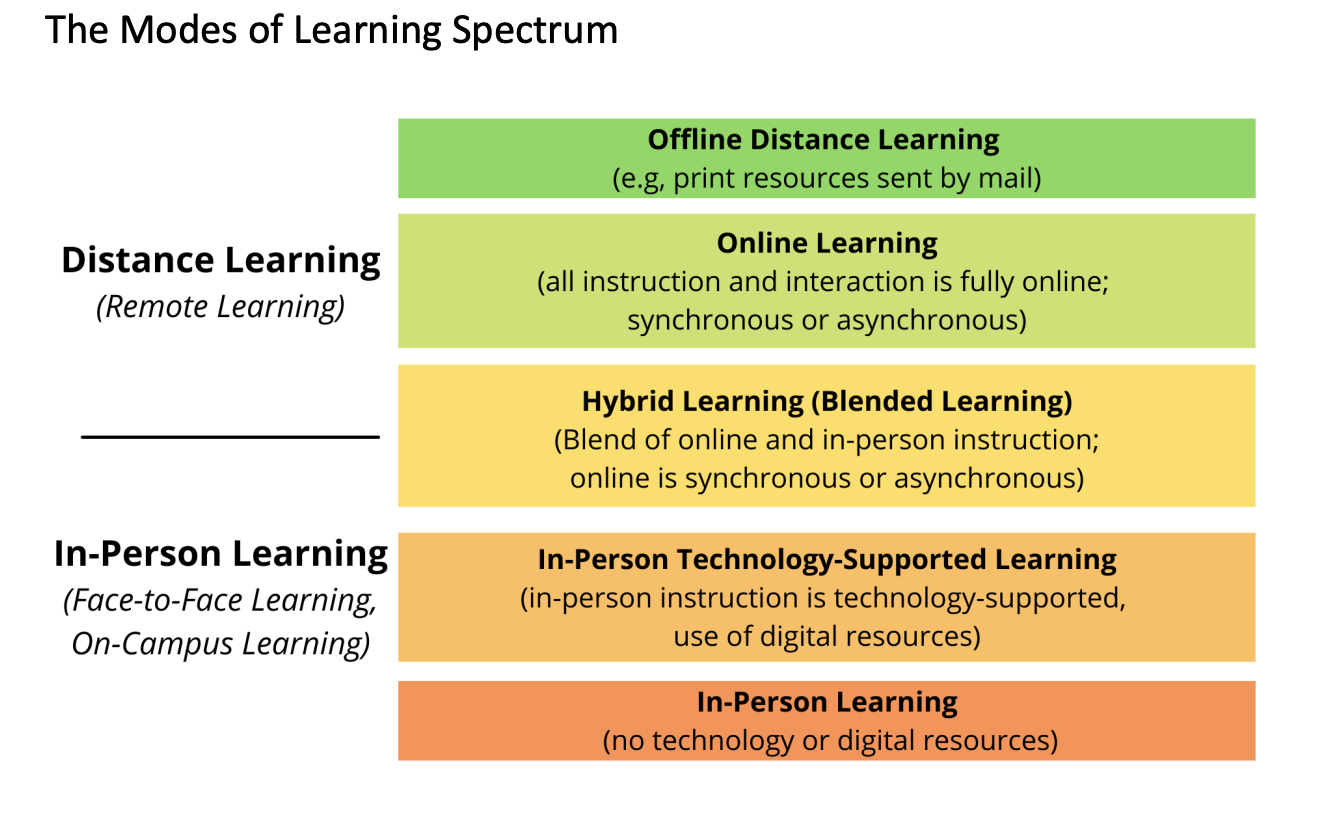
Tyton Partners (2023) Time for class: bridging student and faculty perspectives on digital learning, Boston MA
Muscanell, N. (2023) 2023 Faculty and Technology Report: A First Look at Teaching Preferences since the Pandemic EDUCAUSE, August 21
Bates, T. (2023) Key Issues in Teaching and Learning Resulting from the Covid-19 pandemic Natural Sciences Education, May 17
Means, B. et al. (2010) Evaluation of Evidence-Based Practices in Online Learning: A Meta-Analysis and Review of Online Learning Studies Washington, DC: US Department of Education
First of all, welcome back! I hope you have had a great break and have returned full of enthusiasm for teaching this coming semester.
I too have had a bit of a break from blogging, but I have several new posts in the pipeline, hopefully ready for when you start back in September.
In an article for Natural Sciences Education, I argued that hybrid learning (a mix of in-person and online) is … the future of teaching and learning in higher education, although there will be important but specific markets for both wholly in-person and fully online learning.
My argument received considerable push-back from one of the external reviewers, who was highly sceptical that face-to-face or in-person teaching was likely to be replaced as the main mode of delivery for post-secondary education. However, three recent reports provide further evidence on this topic. (If you want to skip the boring details, you can just jump to my conclusion at the end of this post!)
Tyton Partners recently published a survey of faculty, administrators and students (presumably in the USA) on student and faculty perspectives on digital learning in the Spring of 2023. EDUCAUSE in the USA has just published the results of a survey on faculty teaching preferences (with regard to mode of delivery) post-pandemic. I will also be referring to a new CDLRA Spring 2023 Survey of Canadian faculty and administrators that will be published shortly, for comparison.
The Tyton Partners Research
This was the biggest of the three studies. Tyton gathered insights from 2,048 students, 1,748 instructors, and 306 higher education administrators in the Spring of 2023 on a range of issues regarding digital learning. I am focusing here particularly on faculty attitudes towards digital learning, though the report ranges more widely than this.
Tyton Partners found:
- faculty and students differ in their preferences for course modalities with students strongly preferring hybrid and digital options and instructors more likely to prefer
face-to-face instruction (see Figure 3 below);
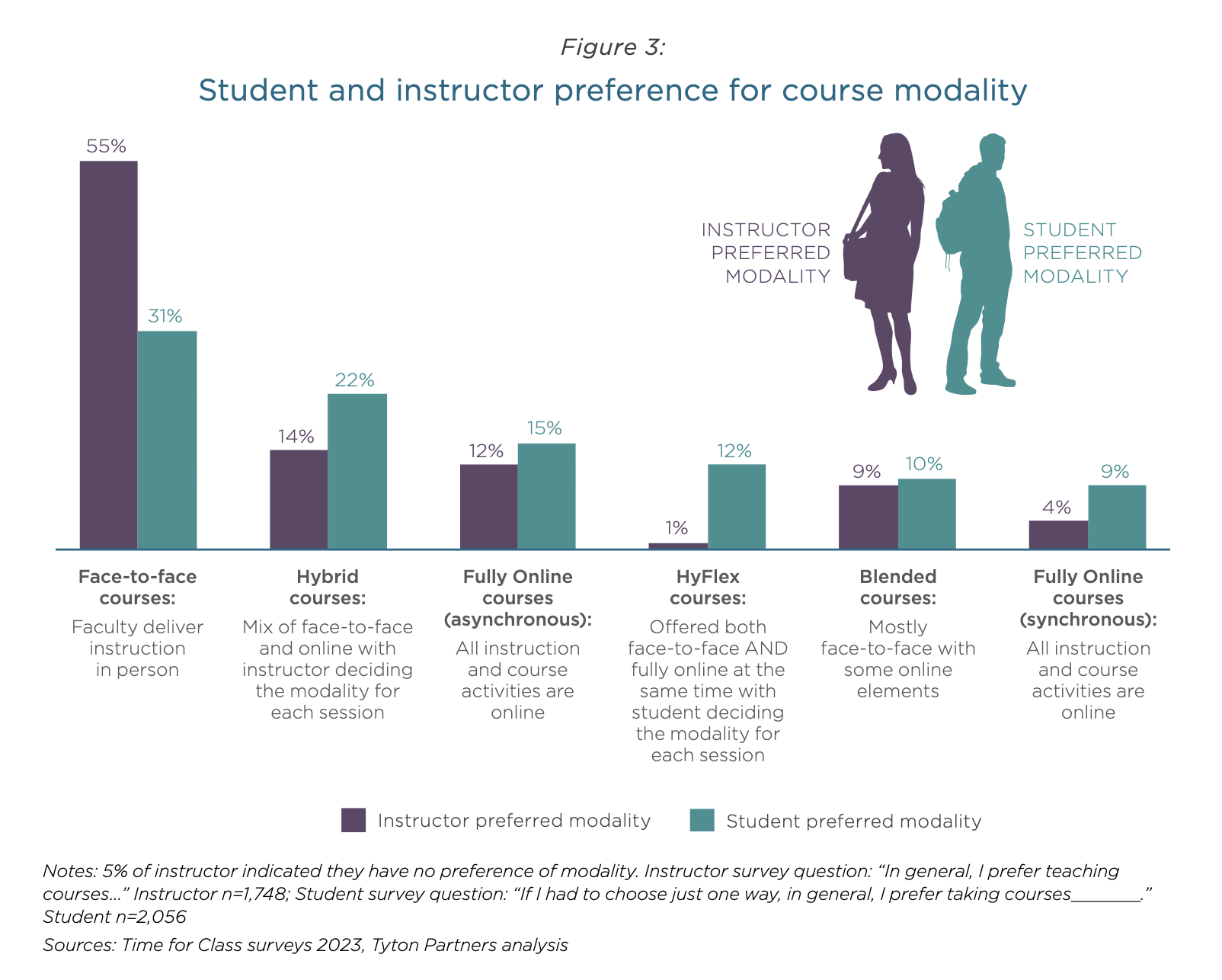
- many students lack access to stable internet, devices, and applications. This problem is particularly acute for students at community colleges and students of colour but persists across all institutional sectors and student demographics. Moreover, inequitable access to technology persists, although three years have passed since the COVID-19 pandemic pushed digital learning to become the required form of learning.
- instructors who report that they work at institutions that prioritize teaching and learning (e.g., incentivize effective teaching, and provide training on course design) are more likely to engage in these practices and thereby improve student outcomes.
The Tyton Partners’ report also has some interesting results regarding instructors response to the use of generative AI writing tools:
“Preventing student cheating” jumped to the top instructional challenge reported by instructors in 2023, up from the 10th in 2022. Despite this concern, institutions have been slow to respond with changes to policy: only 3% of institutions have developed a formal policy regarding the use of AI tools, and most (58%) indicated they will begin to develop one soon…..
While institutional stakeholders are debating the next steps, students are adopting these tools at an exceptionally fast rate. Within just 100 days of ChatGPT’s launch in November 2022, nearly one in three surveyed students reported regular use of generative AI tools “(see Figure 14).
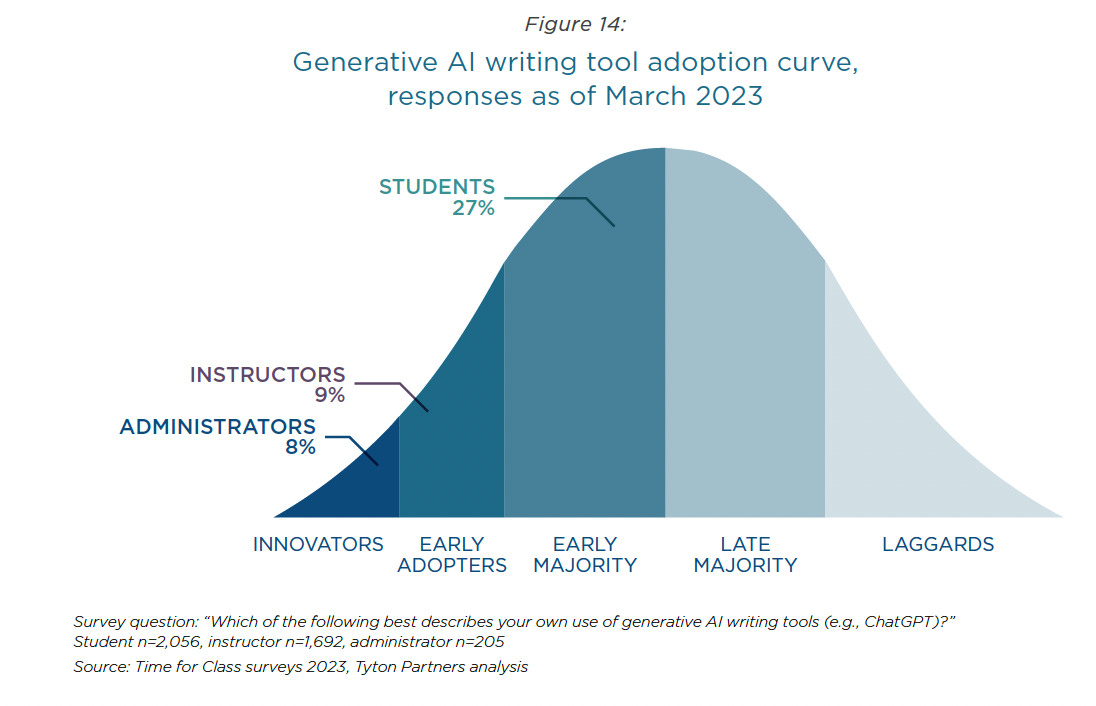
The EDUCAUSE survey
EDUCAUSE asked faculty about their experiences teaching online and hybrid courses before, during, and following the pandemic. Using a stratified sampling approach, 982 faculty from eight institutions, both public (63%) and private (37%) institutions, responded, of which 34% were from two-year colleges. Most of the faculty surveyed (72%) were full-time. It should be noted that this is a very small sample of U.S. faculty.
In 2023, the majority of instructors (53%) still preferred ‘on-site’ teaching (see Figure 1 below). Only 20% preferred hybrid, and 18% online.
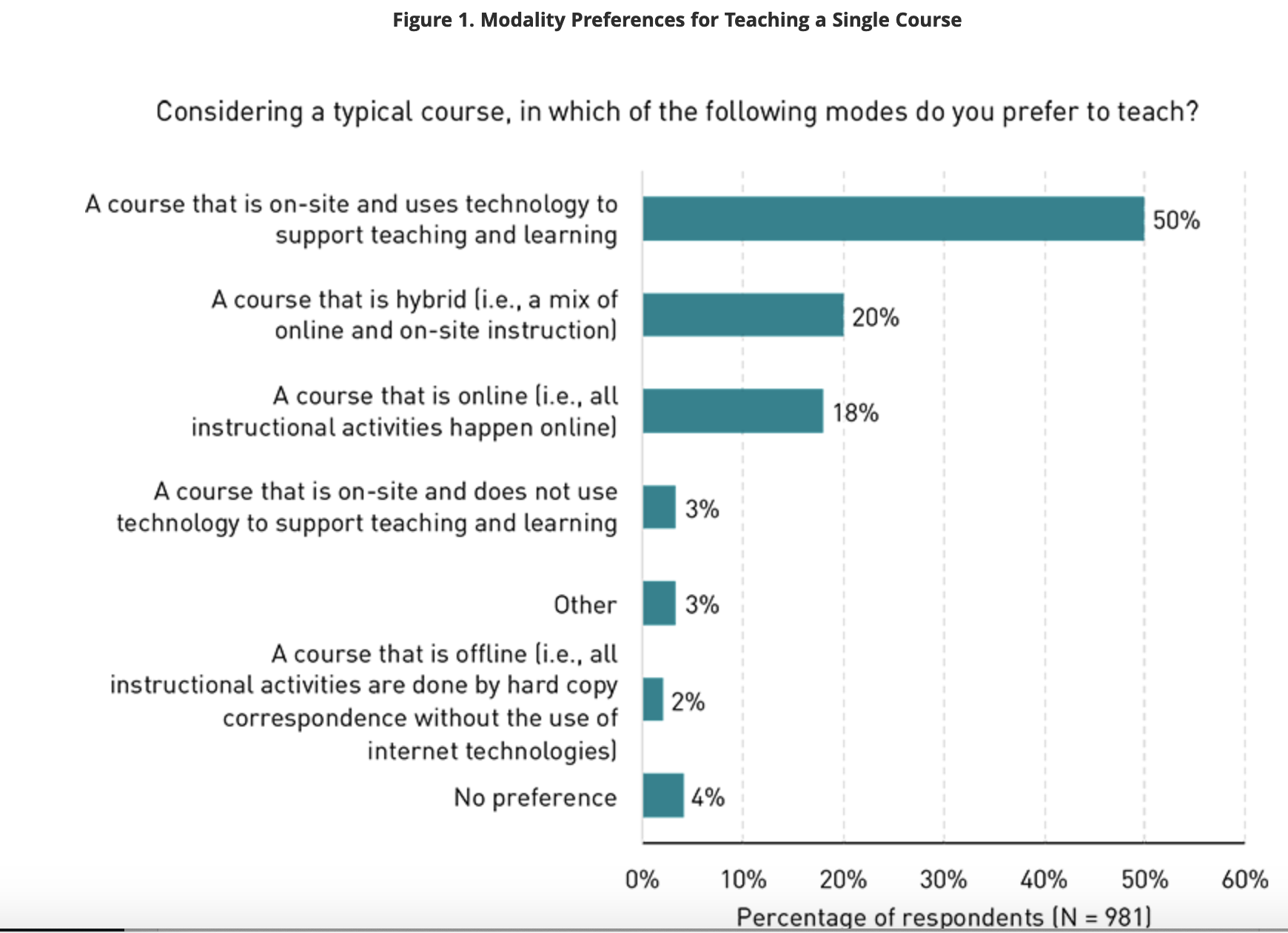
However, this was a substantial change from 2019, when 73% of faculty preferred teaching mostly or completely on-site, and only 9% teaching fully online. Hybrid learning remained unchanged as a preference.
Also, it is important to read the full EDUCAUSE report. The faculty responses were quite nuanced (see Figure 5 below):
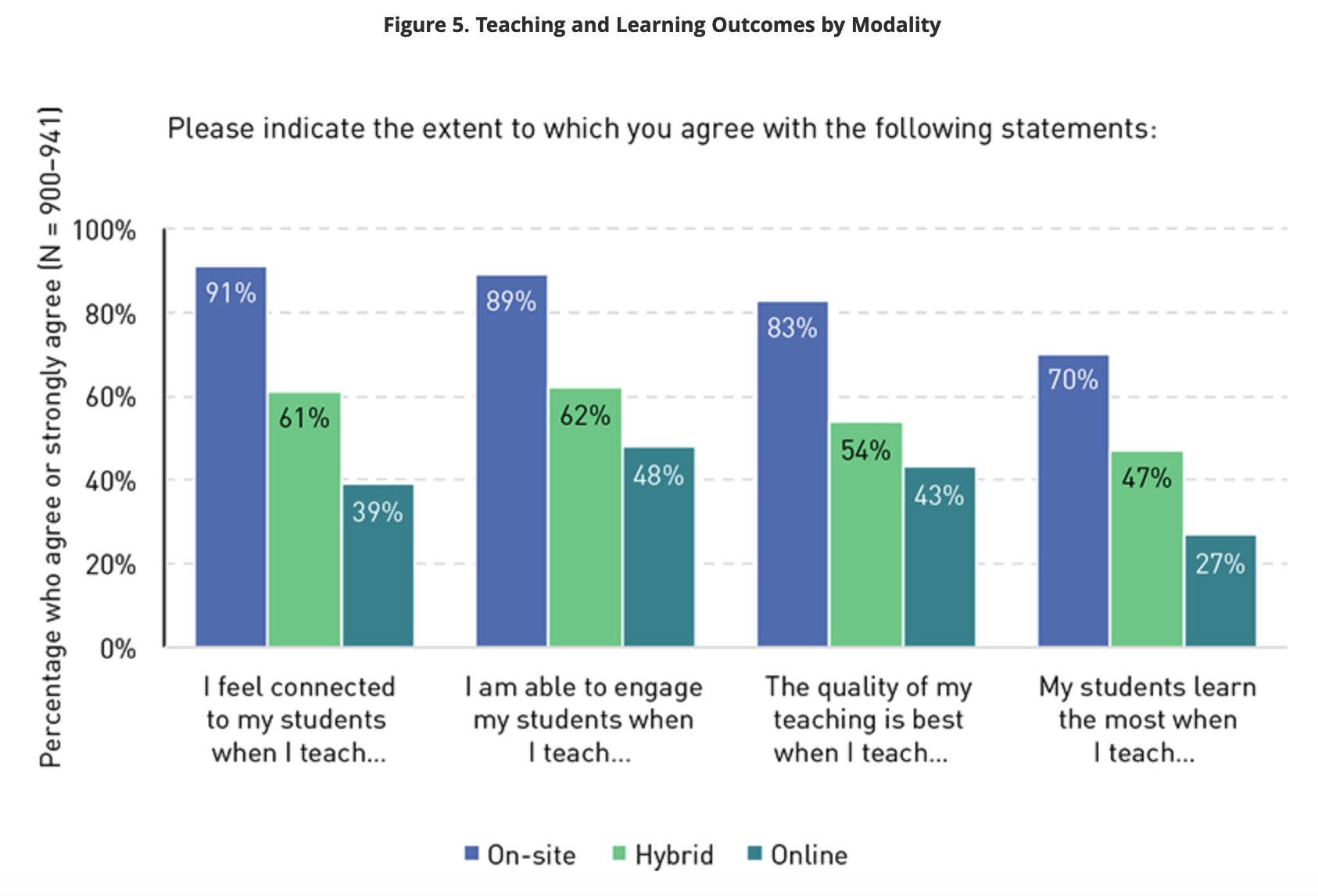 The main reason for faculty preferring on-site is connection and engagement with their students, and a substantial number (70%) also felt students learned more (although this is not supported by most research on student learning outcomes – see, for example, Means et al. 2010).
The main reason for faculty preferring on-site is connection and engagement with their students, and a substantial number (70%) also felt students learned more (although this is not supported by most research on student learning outcomes – see, for example, Means et al. 2010).
The CDLRA Research
The Canadian Digital Learning Research Association also conducted similar research in the Spring of 2023. This is due to be published shortly. I am drawing on a report to CDLRA members on August 9.
CDLRA surveyed both administrators and faculty in the Spring of 2023. They received responses from a total of 438 individuals, mainly administrators, from 125 institutions. This cannot be considered a representative sample of Canadian faculty, so it is more a survey of what administrators think, but the results are still interesting.
In terms of where administrators think digital learning is moving, at least in Canada, see:
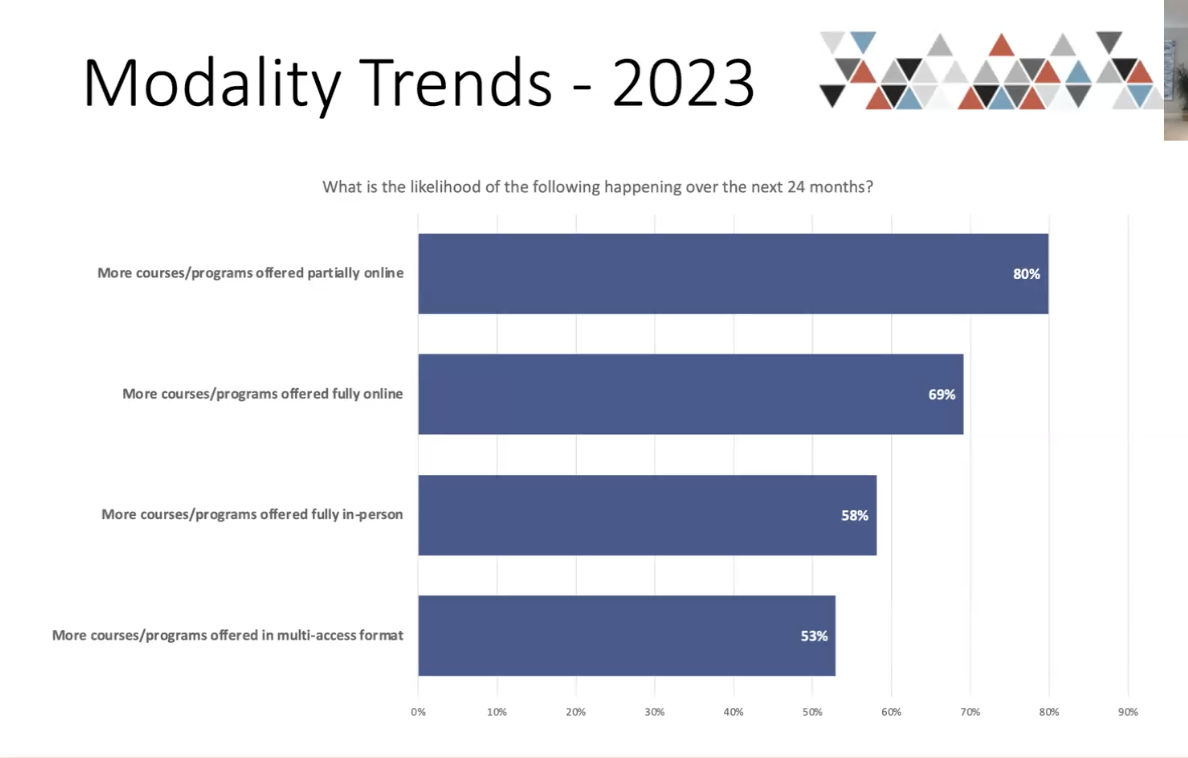
It can be seen that in Canada, 80% of administrators believe there will be an increase in courses offered partially online and 69% believe there will be more fully online courses, while only 58% believe there will be more in-person courses. Academic integrity was also ranked the most important issue for Canadian administrators
I will do a fuller report on this year’s CDLRA surveys when they are published.
Conclusions
These results can be simply summarised as follows:
- most instructors still prefer in-person/on-site teaching, but students want more digital learning, because its flexibility better meets their current requirements;
- administrators believe that digital learning (hybrid and/or fully online) will continue to expand into the future;
- the proportion of instructors preferring on-site/in-person teaching though is steadily decreasing each year; almost half the faculty in North America now appear willing to embrace various forms of digital learning.
The evidence though is still not conclusive. We need larger surveys with better response rates to be sure, but I’m still sticking with my prediction that the future is hybrid learning. What do you think?









 Dr. Tony Bates is the author of eleven books in the field of online learning and distance education. He has provided consulting services specializing in training in the planning and management of online learning and distance education, working with over 40 organizations in 25 countries. Tony is a Research Associate with Contact North | Contact Nord, Ontario’s Distance Education & Training Network.
Dr. Tony Bates is the author of eleven books in the field of online learning and distance education. He has provided consulting services specializing in training in the planning and management of online learning and distance education, working with over 40 organizations in 25 countries. Tony is a Research Associate with Contact North | Contact Nord, Ontario’s Distance Education & Training Network.

